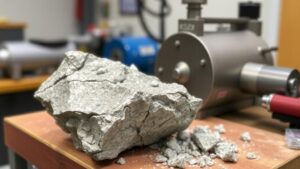Identifying Geologic Markers That Point to Gold-Bearing Zones
Identifying Geologic Markers That Point to Gold-Bearing Zones
Gold, one of the most sought-after metals, often requires careful geological exploration to locate viable extraction sites. Understanding geologic markers that indicate gold-bearing zones is crucial for prospectors and mining companies alike. This article outlines essential markers and their significance in identifying potential gold deposits.
Understanding Gold Formation
Gold is typically formed through several geological processes, including magmatic, hydrothermal, and sedimentary processes. Understanding how these processes work helps in identifying associated markers. Most commonly, gold is found in association with quartz veins, which are indicative of mineral-rich hydrothermal systems.
Geological Structures Related to Gold Deposits
Geological structures play a significant role in the localization of gold. These include:
- Faults and Shear Zones: Gold is often concentrated along faults and shear zones where tectonic movements create fractures in the rock, providing pathways for mineralizing fluids.
- Intrusive Rock Contacts: The contact points between intrusive igneous rocks and surrounding sedimentary rocks create environments conducive to the deposition of gold.
- Fold Structures: Anticlines and synclines can trap mineralizing fluids, often leading to gold deposits.
For example, the Carlin Trend in Nevada features gold deposits associated with fault systems and stratigraphic changes, demonstrating how these geological structures influence gold localization.
Mineral Associations
Gold often occurs with specific indicator minerals that help guide exploration efforts. e associations include:
- Quartz: A common host mineral for gold, quartz can be found in various forms including vein and disseminated styles, often indicating mineralization.
- Pyrrohotite and Arsenopyrite: These sulfide minerals often appear in association with gold-rich deposits, signifying potential mineralization zones.
- Carbonates: Often found in altered rock associated with epithermal gold deposits, these can indicate areas favorable for hosting gold.
An illustrative case is the gold mines in Australia, particularly the Super Pit in Kalgoorlie, which demonstrates frequent associations of gold with quartz and sulfide minerals.
Soil and Sediment Sampling
Geochemical soil and sediment sampling can identify potential gold deposits. Anomalies in concentration of gold and its pathfinder elements (such as arsenic, bismuth, and antimony) provide critical information regarding buried gold deposits.
For example, during explorations in Guelb Moghrein in Mauritania, soil sampling revealed high concentrations of pathfinder elements, leading to the discovery of prolific gold zones.
Remote Sensing and Geophysical Techniques
Modern exploration utilizes remote sensing and geophysical techniques, including:
- Magnetic Surveys: Indicate the presence of certain geological formations associated with gold deposits.
- IP (Induced Polarization) Surveys: Help detect the presence of sulfide minerals often associated with gold.
- Aerial and Satellite Imagery: Aid in mapping surface features and vegetation changes that may hint at subsurface mineralization.
A notable example is the use of airborne geophysical surveys in the exploration of the Sudbury Basin in Canada, which has led to significant findings by correlating geophysical data with known deposits.
Conclusion and Actionable Takeaways
Identifying geologic markers that indicate gold-bearing zones requires a comprehensive understanding of geological structures, mineral associations, and advanced exploration techniques. By integrating these diverse datasets, prospectors can enhance their chances of discovering gold deposits.
- Conduct detailed geological mapping to identify structural features.
- Use soil and sediment sampling to locate geochemical anomalies.
- Incorporate remote sensing techniques to gain a broader understanding of the terrain.
By following these guidelines, explorers can effectively narrow down their search for gold, increasing the odds of successful discoveries in a competitive industry.


